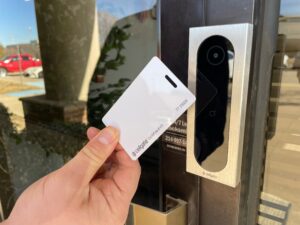
Yes, Anti ram gates can be changed a lot more than most people think. In fact, the only way to make these barriers really work is to fit them to the layout of the site, the amount of threat, and the way they work every day. Every property is different, and security doesn’t always operate the same way for everyone. A logistics center gets ready for high-speed incursion threats in a very different way than a research institution or a city courthouse controls access. Customization is now a key part of modern perimeter protection for this reason.
What Makes Each Site’s Security Requirements So Different?
It’s tempting to think that all vehicle-mitigation systems do the same thing, but that’s not the case. A distribution plant close to a busy highway might be just as worried about trucks rolling away by accident as they are about attacks. A campus with entrances that are busy with pedestrians would want to keep traffic moving smoothly without making the area feel too secure. The way the earth is made up under the gate line can even affect how the foundation needs to be built.
Because there are so many different kinds, you can’t just slap an anti-ram gate into position and expect it to work correctly. Engineers usually begin by looking at the angles at which vehicles will approach the gate, the distance they can halt, the types of vehicles they expect to see, and how often the gate will open and close each day. These things decide if a sliding gate, swing gate, or vertical-rising design is best. They also decide if further systems, like an Automated Gate Operator, need to be included to make daily use easier.
How Are Anti Ram Gates Adapted for Different Threat Levels?
Customization is especially crucial when the threat level is high. Some places need a barrier that stops a slow-moving car, while others need to be ready for a huge truck to hit them with full power. These variances affect both the materials used to build the gate and how deep the anchoring system goes.
For instance, a small municipal storage yard might adopt a lighter design that nevertheless meets certified crash criteria for minor hazards. In the meanwhile, a sensitive facility can choose reinforced steel cores, deep-set foundations, and extra security in the gate’s locking mechanisms. Aesthetic choices can also be important. Many sites want their anti-ram gates to fit in with the surroundings instead of standing out as strong security elements. That’s why manufacturers often let coatings, architectural styles, and levels of visibility vary without affecting the main defensive purpose.
Where Does Technology Fit Into the Customization Process?
Technology is more important than ever, especially when operations need to be easy without compromising security. This is when it is important to use Anti-Ram Gates with an Automated Gate Operator. Automation lets the system open rapidly for cars that are allowed to pass through, and it stays strong enough to protect against crashes while it’s closed.
In real life, this could involve setting up the gate to work with access cards, license plate recognition, or delivery windows that are already set. Soft-start systems help high-traffic sites by reducing wear and tear on the machinery. Remote facilities may also include automated warnings that let staff know if the gate is hit or breaks down. These features aren’t just one-button add-ons; they’re made to fit the way the property actually works, including its speed and rhythms.
Can Anti Ram Gates Be Customized to Overcome Physical Constraints?
Yes, and this is where engineers typically come up with the most inventive ideas. Not every location has a clear, flat path to the entrance. Some gates need to be put up on slopes, in narrow spaces, or in places where there are underground utilities that make it hard to dig deep enough for foundations. In these situations, designers might change the gate’s footprint, change the hinge shapes, or employ different ways to mount it.
Take a government building in a city that has limited pathways and historic architectural characteristics. Installing traditional deep-foundation gate systems might not be possible. A surface-mounted system with stronger anchoring, on the other hand, may offer the needed stopping power without bothering the area around it. Sometimes, gates in isolated industrial areas need to be longer or have bespoke travel routes to go across huge openings, especially when big machines go through them all the time.
How Do Daily Operations Influence Customization Choices?
Security isn’t only about stopping attacks; it also has to work well on a routine Tuesday morning when people are hurrying to work. People start to think of ways to get around a gate that opens too slowly or feels heavy, and that’s when security holes start to appear.
Because of this, a lot of facilities choose to combine Anti Ram gates with an Automated Gate Operator that is made to be used often. High-duty-cycle motors, easy-to-reach maintenance, and sophisticated controls all help keep things running smoothly. Some places want gates that don’t make noise so they don’t bother people who live nearby, while others want parts that can withstand bad weather because the gate will open and close hundreds of times in bad weather. These practical, everyday factors can affect anything from the choice of materials to the choice of actuators.
Conclusion
Anti-ram gates are not only static, off-the-shelf obstacles. Their true strength is how well they can be changed to fit the needs of a property. There are many ways to customize the system, whether the goal is to make it look good, reduce high threats, automate tasks, or just get past a difficult piece of land. These security systems are more than simply barriers; they are also reliable, customized parts of a larger safety plan thanks to structural engineering, careful design, and technologies like an Automated Gate Operator.



